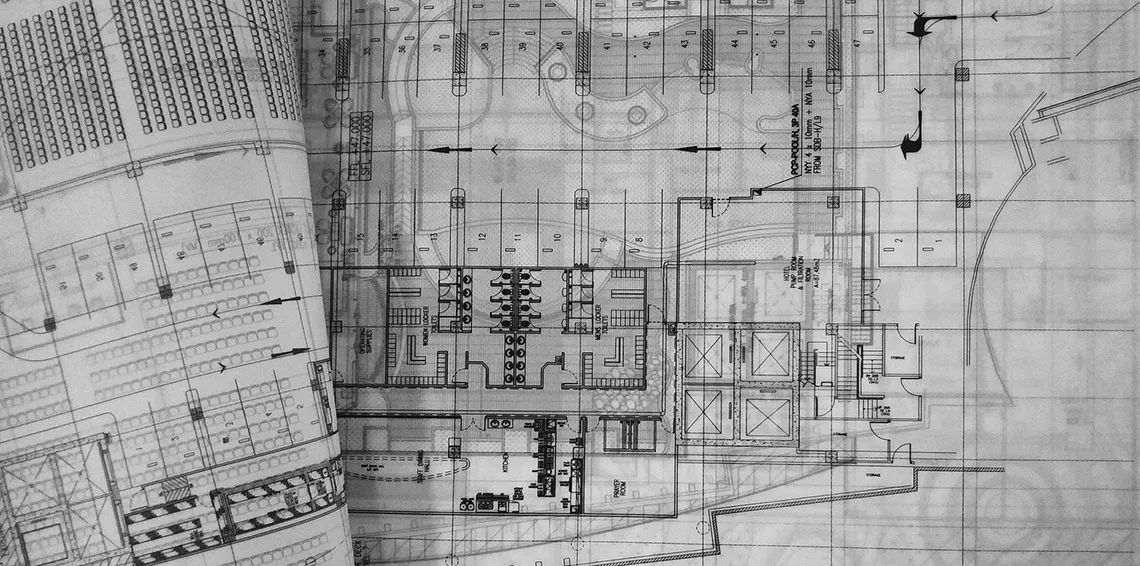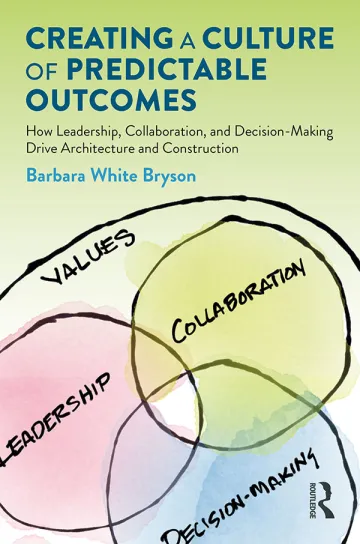Embracing Risks and Contracts in Design and Construction
CAPLA Thought Leadership

By Barbara Bryson

Two of the most challenging barriers to creating a culture of predictable outcomes for the design and construction industries are misunderstanding risk and wrestling with poor contracts. Both conditions have flourished due to the lack of business education of many players in our industries.
However, there are some basic principles related to each that can be easily revealed and understood. Knocking down these obstacles will go a long way to achieving the kinds of collaborative environments we need.
Risk Definitions
Risk, in the design and construction industries, is what you do not know and what you cannot control. Risk is one of the most problematic and most misunderstood concepts in the design and construction industries, primarily because we have allowed others to define it for us. Dictionary.com defines risk as “exposure to the chance of injury or loss; a hazard or dangerous chance,” or, for the insurance world, “the hazard or chance of loss, the degree of probability of such loss, or the amount that the insurance company may lose.”
All this talk about injury or loss is a bit confusing in our world of design and construction because we are in the business of creating and building. Yes, we have the risk of injury on construction sites and of injury or loss from defective design or construction, but most of the risk we face every day on projects has little to do with this kind of danger. One interesting point to take away from this insurance definition, however, is that risk can be measured. Insurance companies have been quantifying risk for years.
The Insurance and Risk Management Professionals website defines risk as “Uncertainty arising from the possible occurrence of given events.” This definition is more helpful as it hits at the heart of our experiences in design and construction. Uncertainty and, therefore, unpredictability are what
we face in our business. The more uncertainty we can remove from our projects, the more risk we remove. In other words, in our industries, risk must be defined as what we do not know and what we cannot control. The better the quality of knowledge and the better the team structures for executing projects, the lower the risk.

Risk Types
This discussion brings us to another important area of clarification regarding risk in the design and construction industries. There is a vast difference in value and definition between risk avoidance, risk management and risk reduction as follows:
Risk avoidance is what lawyers, insurance companies and even the AIA have been encouraging the designing construction industries to do for years. Avoiding risk means avoiding responsibility and avoiding opportunity. Risk avoidance handcuffs team members and creates animosity. Risk avoidance crushes innovation. You may have heard the aphorism “there is no reward without risk.” This saying is mostly true, although I think it would be wiser to say there is no reward without responsibility. With responsibility comes risk. Once you have that risk, you have two choices: you can manage it or reduce it. Risk management is the process of carefully identifying risk and putting
plans in place to manage the consequences of that risk (not the same as avoiding the risk). For example, you may take on a new team with some members you do not trust. To manage the risk, you might put a trusted employee on the team and increase the frequency of check-in meetings. Typical risk management strategies include insurance and bonding, although these structures are not nearly as useful as they should be because they are designed by people outside our industries who want to take advantage of our naivete.
Risk reduction is the process of accepting risk, then methodically reducing or eliminating risk by increasing knowledge or control over that risk. Collaborative environments reduce risk significantly more than noncollaborative environments by providing greater transparency and greater knowledge sharing, thus improving problem-solving and accelerating reaction to the market. For example, Sutter Health adopted Target Value Design in 2004, a highly collaborative process of managing a project budget transparently and ideating cost reduction continuously. Risk reduction also plays a part in decision risk. The better the quality of the “decision-ready” information and the more timely that decision is made, the more knowledge and control you have over the decision and the lower the risk of that decision. The most important takeaway here is to remember when you actively reduce risk on any project, you build value on that project—value for every team member.
The Theory of Expanding Risk is a concept I wrote about in The Owner’s Dilemma. Just as you can create environments, processes and contracts that reduce risk, project stakeholders can significantly, even exponentially, increase risk on a project. Beware of processes that create bureaucracies, opaque decision-making or undermine team values. The design and construction industries must move quickly away from risk avoidance, so we may enter an era of extreme collaboration, partnership and innovation. There will be some risks that must be managed, but many risks can be reduced or eliminated through collaboration and innovation if we do not let attorneys and insurers get in our way.
Contracts
Don’t get me wrong, just like any profession, there are good attorneys and there are bad attorneys. Perhaps I should say, there are attorneys who deeply understand what we do and attorneys who have absolutely no idea at all. It’s the attorneys in this second category, often well-meaning, who have caused so much damage to our industry, pushing us into silos and prioritizing risk avoidance above all else. Understanding the letter of the law for insurance— I’ll include insurance brokers here— doesn’t mean an attorney or broker knows how to leverage that knowledge to benefit the business of design and construction.
I cannot place all the blame on the lawyers and insurance brokers. Frankly, there is a longstanding problematic relationship between the design and construction industries and its contracts. Just as with risk, there is a general misunderstanding of what role contracts can and should play within a project.
This fundamental misunderstanding has created a set of contractual relationships in our industries that make us act in ways we do not want to and, often, squelch innovation. When contracts lead our professional relationships rather than a culture of predictable outcomes, we get stuck in destructive, value-sucking patterns. These types of contracts reduce value for every member of the team. I must warn you now. I am not a lawyer. I am an experienced practitioner. Always consult a trusted attorney before you sign any contract.
However, I suggest professionals consider the following as they develop contractual relationships in the future:
Context—Understand the legal context in which you work and learn about the basics of contract law. Most design and construction industry professionals have never had a business law class, which puts these professionals at a disadvantage.
Siloed relationships—Most legal advisers will try to divide responsibilities and liabilities between contractual parties in design and construction contracts with the intention to reduce risk. Instead, this contractual device most often results in increased risk by pushing participants into opaque adversarial relationships.
Unintended Consequences—Many legal and insurance professionals do not understand our industries or the work we do, causing unintended consequences while working on our contracts and policies. These include remedies such as liquidated damages, adding risk for all parties by increasing adversarial oversight.
Acting badly—Contracts do not force people to misbehave and cannot compel others to act well. People choose their actions based on their individual level of understanding of the consequences of their actions and their personal values.
Reversal of roles—You do not work for legal advisers or insurance advisers. They work for you. Legal and insurance instruments should be created to support your business goals, not to impede them.
Appreciating these dynamics and turning them around to serve a culture of predictable outcomes will help you meet your project goals from the start of the project.
This thought leadership editorial is an excerpt from Creating a Culture of Predictable Outcomes: How Leadership, Collaboration and Decision-Making Drive Architecture and Construction, by Barbara Bryson, published by Routledge, 2020. It is used with permission of the author and press.
Bryson, the associate dean for research and director of the Drachman Institute at the University of Arizona's College of Architecture, Planning and Landscape Architecture until her retirement in May 28, 2021, was the UArizona vice president of strategic planning and analysis before joining CAPLA in 2016. Her research interests include the future of the architecture profession as well as integrated planning and master planning for university campuses. After practicing architecture within major firms for nearly two decades, she turned to higher education in 1996, with stints as university architect at the University of Miami and associate vice president for facilities, engineering and planning at Rice University. The co-author of The Owner’s Dilemma: Driving Success and Innovation in the Design and Construction Industry, she holds a doctorate in higher education from the University of Pennsylvania, an MBA from the University of Miami and a BS in Architecture from the University of Texas at Arlington.
Learn more about CAPLA's architecture and other undergraduate and graduate design programs prepare you for a sustainable career in the built environment.
Header image by pisauikan, courtesy Pixabay.



